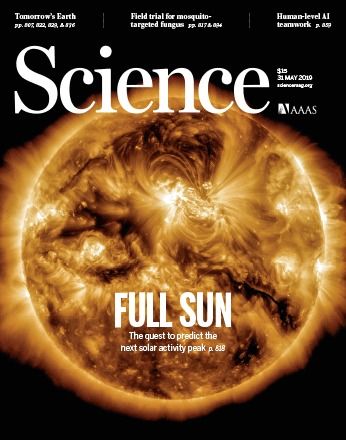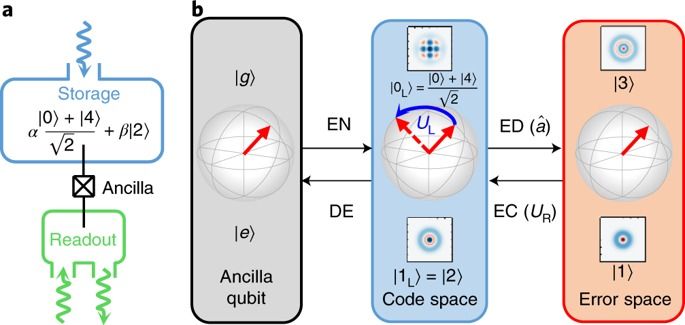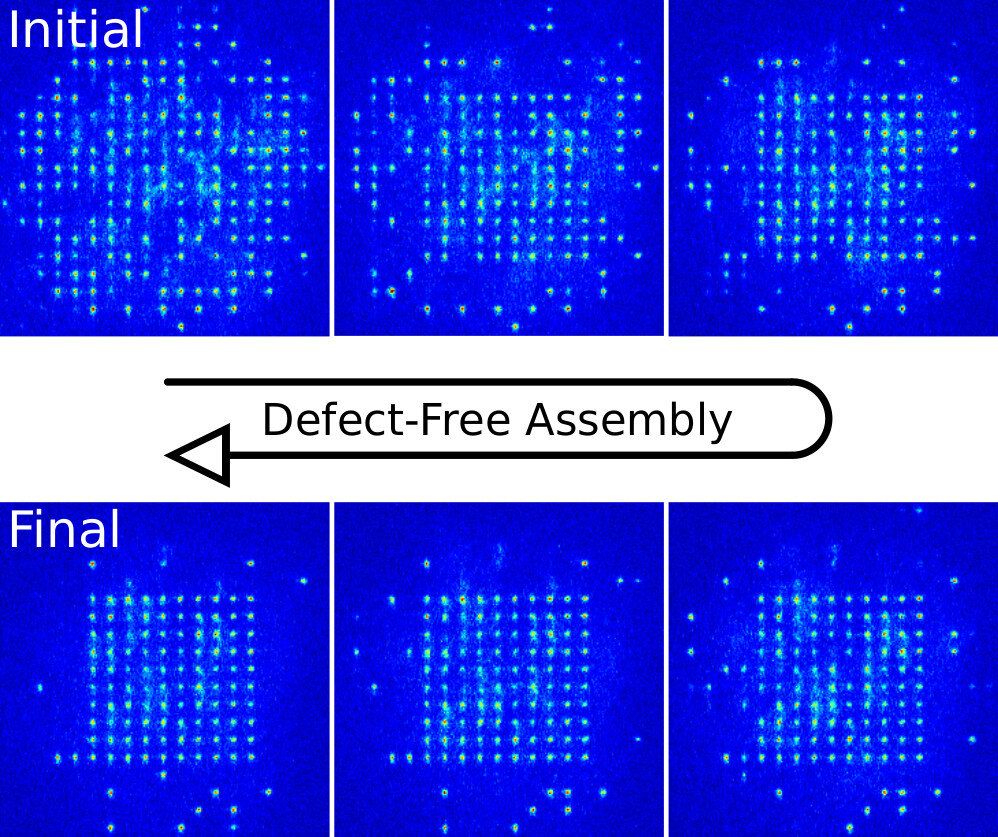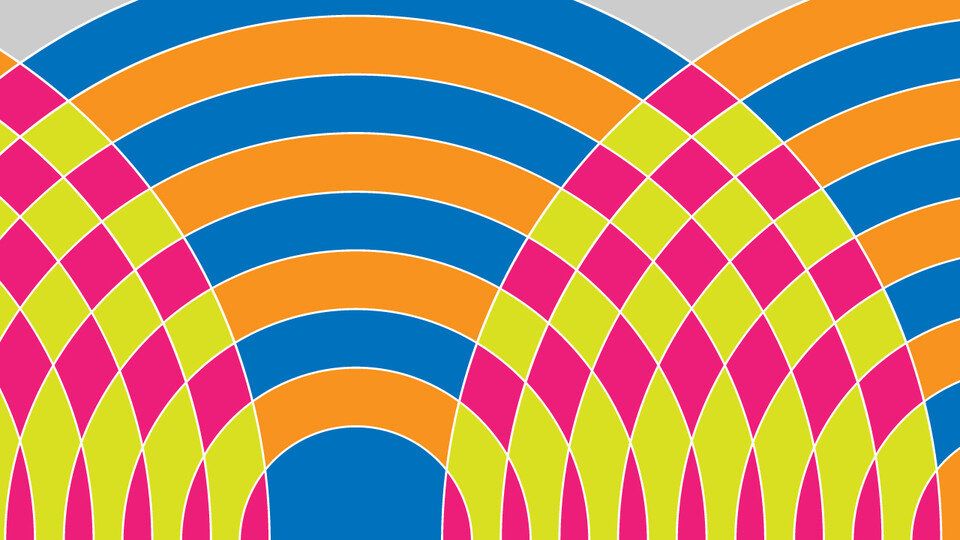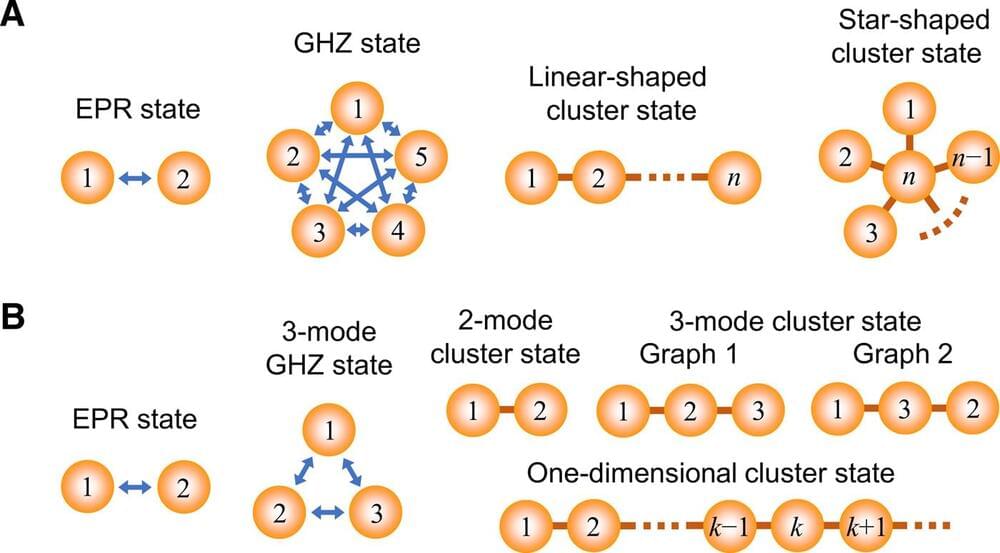Archive for the ‘quantum physics’ category: Page 612
Jun 1, 2019
I wanted to have a long running post where i will be tracking serious papers about time travel
Posted by Dan Kummer in categories: computing, information science, quantum physics, time travel
Also, loosely following technology that could be used to build a real working time machine. Anyone with an interest in time travel is welcome to participate.
But, I have been watching tech news for what could be used to build a time machine. I think we are pretty close. You’d still need a few physics guys with 150+ IQ’s to work on the equations, a guy with a 200+ IQ to figure out how to put the whole thing together, and a guy with billions of dollars to fund it. But most of this stuff is for sale to the public, (short list):
1. quantum computer; to run the calculations.
May 31, 2019
Fault-Tolerant Error Correction with Efficient Quantum Codes
Posted by Quinn Sena in category: quantum physics
We exhibit a simple, systematic procedure for detecting and correcting errors using any of the recently reported quantum error-correcting codes. The procedure is shown explicitly for a code in which one qubit is mapped into five. The quantum networks obtained are fault tolerant, that is, they can function successfully even if errors occur during the error correction. Our construction is derived using a recently introduced group-theoretic framework for unifying all known quantum codes.
May 31, 2019
Quantum gate teleportation between separated qubits in a trapped-ion processor
Posted by Quinn Sena in categories: computing, quantum physics
Gating—controlling the state of one qubit conditioned on the state of another—is a key procedure in all quantum information processors. As the scale of quantum processors increases, the qubits will need to interact over larger and larger distances, which presents an experimental challenge in solid-state architectures. Wan et al. implemented the 20-year-old theoretical proposal of quantum gate teleportation that allows separated qubits to interact effectively. They deterministically teleported a controlled-NOT gate between two computational qubits in spatially separated zones in a segmented ion trap, demonstrating a feasible route toward scalable quantum information processors.
Science, this issue p. 875
Large-scale quantum computers will require quantum gate operations between widely separated qubits. A method for implementing such operations, known as quantum gate teleportation (QGT), requires only local operations, classical communication, and shared entanglement. We demonstrate QGT in a scalable architecture by deterministically teleporting a controlled-NOT (CNOT) gate between two qubits in spatially separated locations in an ion trap. The entanglement fidelity of our teleported CNOT is in the interval (0.845, 0.872) at the 95% confidence level. The implementation combines ion shuttling with individually addressed single-qubit rotations and detections, same- and mixed-species two-qubit gates, and real-time conditional operations, thereby demonstrating essential tools for scaling trapped-ion quantum computers combined in a single device.
Continue reading “Quantum gate teleportation between separated qubits in a trapped-ion processor” »
May 31, 2019
Quantum error correction and universal gate set operation on a binomial bosonic logical qubit
Posted by Quinn Sena in category: quantum physics
Repeated error correction creates a logical qubit encoded in the hybrid state of a superconducting circuit and a bosonic cavity, which is shown to be fully controllable under a universal single-qubit gate set.
May 31, 2019
Physicists measure how long graphene qubits hover in “alive/dead” superposition
Posted by Quinn Sena in categories: computing, quantum physics
Practical quantum computers may be another step closer to reality – and like so many technologies, we have graphene to thank for it. The bits of information in quantum computers (qubits) can famously exist in two states at once, and now researchers from MIT and other institutions have managed to record just how long that superposition state can last in a qubit made of graphene.
May 31, 2019
The defect-free assembly of 2-D clusters with over 100 single-atom quantum systems
Posted by Quinn Sena in categories: particle physics, quantum physics
Researchers at Technische Universität Darmstadt have recently demonstrated the defect-free assembly of versatile target patterns of up to 111 single-atom quantum systems. Their findings, outlined in a paper published in Physical Review Letters, could drive assembled-atom architectures beyond the threshold of quantum advantage, paving the way for new breakthroughs in quantum science and technology.
“Our research is driven by the observation that physical sciences are right in the middle of a paradigm shift in which the application of quantum physics, i.e. quantum technologies, are becoming the leading technologies in the near future,” Gerhard Birkl, one of the researchers who carried out the study, told Phys.org. “A vast list of applications are already foreseeable but I am convinced that of most applications we are not even aware of.”
The next step for the field of quantum science and technology is the development of experimental platforms that offer extensive scalability, multisite quantum correlations and efficient quantum error correction. Over the past century or so, researchers have carried out a substantial amount of work on single quantum systems, laying the foundations for current developments. Atomic quantum systems have played a key role in these studies, particularly neutral atoms trapped by light, as they provide well-isolated quantum systems with favorable scaling.
May 31, 2019
How a quantum computer could break 2048-bit RSA encryption in 8 hours
Posted by Quinn Sena in categories: computing, encryption, quantum physics
A new study shows that quantum technology will catch up with today’s encryption standards much sooner than expected. That should worry anybody who needs to store data securely for 25 years or so.
May 30, 2019
Study points to non-Newtonian force affecting particles’ flight
Posted by Genevieve Klien in categories: particle physics, quantum physics
The quotation marks had the force of tradition—and the tradition of force—behind them.
When Nebraska’s Herman Batelaan and colleagues recently submitted a research paper that makes the case for the existence of a non-Newtonian, quantum force, the journal asked that they place “force” firmly within quotes. The team understood and agreed to the request.
After all, the word has long belonged to classical Newtonian physics: equal-and-opposite reactions, electromagnetism, gravity and other laws that explain the apple-dropping, head-bonking phenomena of everyday experience.
Continue reading “Study points to non-Newtonian force affecting particles’ flight” »
May 29, 2019
On-demand, photonic entanglement synthesizer
Posted by Genevieve Klien in categories: engineering, quantum physics
Quantum information protocols are based on a variety of entanglement modes such as Einstein-Podolsky-Rosen (EPR), Greenberger-Horne-Zeilinger (GHZ) and other cluster states. For on-demand preparation, these states can be realized with squeezed light sources in optics, but such experiments lack versatility as they require a variety of optical circuits to individually realize diverse states of entanglement. In a recent study, Shuntaro Takeda and colleagues at the interdisciplinary departments of Applied Physics and Engineering in Japan addressed the shortcoming by developing an on-demand entanglement synthesizer. Using the experimental setup, the physicists programmably generated entangled states from a single squeezed source of light.
In the work, they used a loop-based circuit dynamically controlled at nanosecond time scales to process optical pulses in the time domain. The scientists generated and verified five different small-scale entangled states and a large-cluster containing more than 1000 modes in a single setup without changing the optical circuit. The circuit developed by Takeda et al. could store and release one part of the generated entangled states to function as a quantum memory. The experimental report published on Science Advances, will open a new way to build general entanglement synthesizers on-demand using a scalable quantum processor.
Entanglement is essential for many quantum information protocols in qubit and continuous variable (CV) regions, where they perform a variety of applications. For instance, the two-mode Einstein-Podolsky-Rosen (EPR) state is the most commonly used, maximally entangled state as a building block for two-party quantum communication and for quantum logic gates based on quantum teleportation. The generalized version of this state is an n-mode Greenberger-Horne-Zeilinger (GHZ) state central to building a quantum network, where the GHZ quantum state can be shared between n participants. For example, the n participants can communicate with each other for quantum secret sharing. For quantum computation on the other hand, a special type of entanglement known as cluster states has attracted much attention as a universal resource to allow one-way quantum computation.
Continue reading “On-demand, photonic entanglement synthesizer” »

